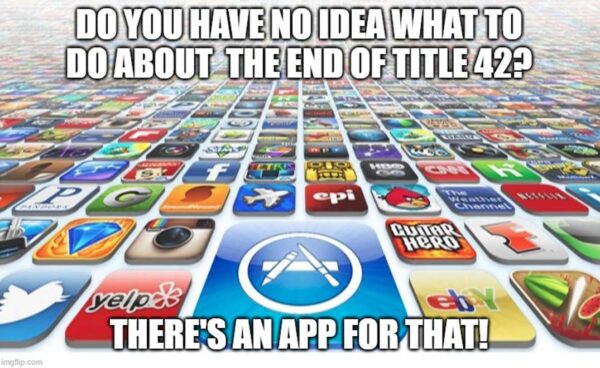This sponsored column is by Law Office of James Montana PLLC. All questions about it should be directed to James Montana, Esq., Doran Shemin, Esq., and Laura Lorenzo, Esq., practicing attorneys at The Law Office of James Montana PLLC, an immigration-focused law firm located in Falls Church, Virginia. The legal information given here is general in nature. If you want legal advice, contact us for an appointment.
Since 1967, the United States has been committed, by law, to allowing refugees and asylum seekers to seek protection from persecution.
Asylum seekers often have difficulty making such requests. Intrinsic factors, like linguistic and cultural differences sometimes play a role, but the government bears its share of responsibility, too. As we’ve previously described in these pages, the required application is voluminous, the instructions are written in impenetrable legalese, the waiting periods are unpredictable and frequently lengthy.
The Biden Administration inherited this legal apparatus along with a major problem at the border: large numbers of asylum seekers, and not enough judges, detention beds, and processing centers to deal with the influx. Initially, the Biden Administration appeared to be using a carrot and stick approach, as we described here, to limit migration from certain high-volume countries. Recently, the Biden Administration has introduced a new tool to limit asylum applications — the CBP One App.
We try to offer more information than opinion in our coverage of immigration issues for ARLnow. The CBP One App tests that equanimity, because it is spectacularly bad from every perspective — bad from the perspective of migrants, bad from the perspective of immigration restrictionists, and bad from the perspective of legal procedure.
First, a brief explainer of what the CBP One App is, and how it works.
The CBP One App is an information-gathering mobile phone application which collects information from asylum seekers. Once you create an account — no easy process, which requires a separate account at login.gov — you can try to schedule an appointment at the port of entry, at which time you can seek protection as an asylum seeker. If you do not have an appointment at the port of entry — and if you do not fit one of a growing list of exceptions, about which more shortly — you’re effectively unable to make an asylum claim.
Until May 10, 2023 the appointment scheduling process was simple and frustratingly familiar to parents of children at local summer camps: log into the app at 10 a.m. Central Standard Time, try to make an appointment, then watch the app crash due to everyone else trying to log in at the same time.
Since May 10, 2023, the appointment registration process has improved, somewhat, through another layer of complexity — you submit what is effectively a daily lottery application; then CBP uses a semi-random (and wholly opaque) method to apportion appointments; if selected, you have a 23-hour window to accept an appointment which might be next door — or might be 1500 miles away. But you probably won’t be selected; the number of appointments is vastly lower than the demand.
Can you avoid using the CBP One App? Yes, you can: if you meet a confusing and unpredictably applied list of possible exceptions, which include:
- Encountering technical difficulties with the app. (Note: Everyone has these difficulties.)
- Language barriers (Note: the CBP One App only provides instructions in English, Spanish, and Haitian Creole)
So, why is this app bad from every conceivable perspective?
- From the perspective of migrants, the CBP One App is bad because it doesn’t work properly, doesn’t have sufficient appointment availability, requires a strong WiFi connection, doesn’t provide instructions in most languages, and sets up appointments thousands of miles away. Also, the UX is bad.
- From the perspective of immigration restrictionists, the CBP One App is bad because it allows people to seek asylum while specifically disclaiming that it is a method for seeking asylum. (“The app is not a method of seeking asylum in the United States, and CBP officers do not determine the validity of any claims for protection.” 88 Fed. Reg. 31,358.) If you do manage to get an appointment through the app, reports indicate that you are allowed into the United States 99% of the time to pursue a claim for relief. Finally, the exceptions (including for technical glitches!) threaten to swallow the rule requiring use of the app.
- From the perspective of law, the CBP One App is bad because the United States has been committed, for more than fifty years, to allowing refugees to apply for protection. The CBP One App adds a bizarre and interminable lottery as a threshold for entry to make a legal claim. Getting lucky should never be a prerequisite for having your day in court.
As always, we welcome your comments and will do our best to respond.



